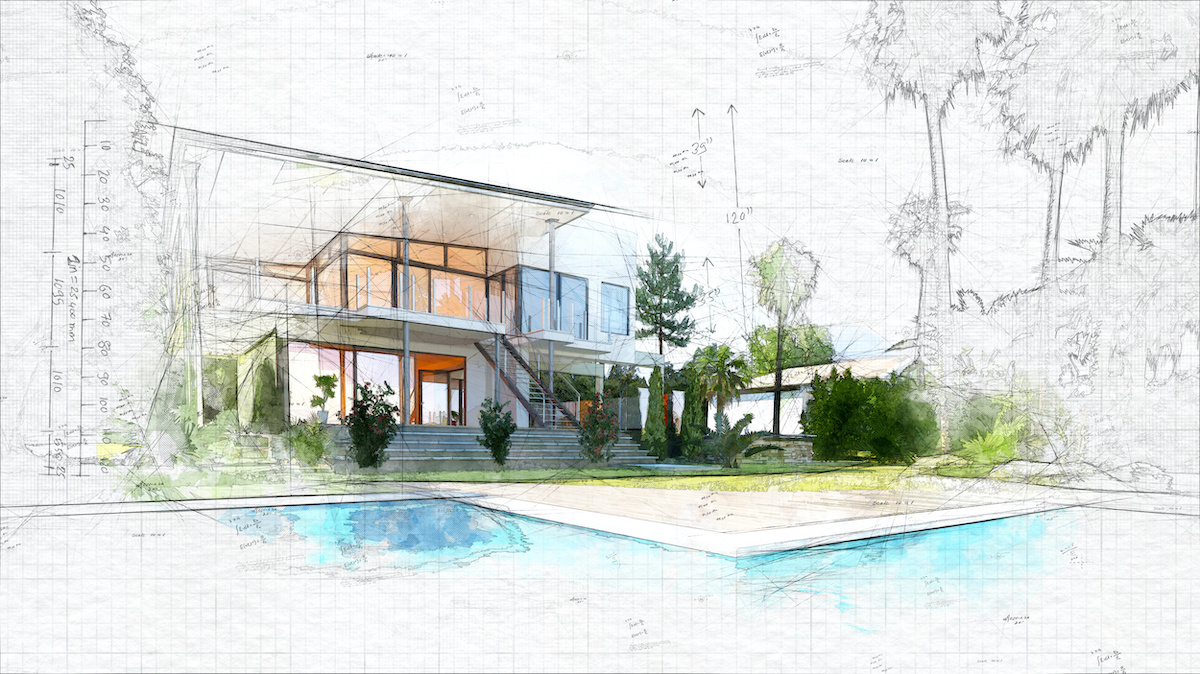Discover Prize-winning Projects by Distinguished CDA Architects
The Influence of Technological Advancements on the Layout Practices of Contemporary Architects
The quick evolution of technological tools has dramatically reshaped the design landscape for modern architects, fostering unprecedented levels of technology and sustainability. Checking out these characteristics discloses a nuanced interplay in between modern technology and traditional style methodologies, motivating a more detailed exam of what the future holds for building practices.
Development of Architectural Tools
Just how have architectural tools transformed the style and construction processes over the centuries? The development of building tools has dramatically affected the efficiency, precision, and creative thinking of layout and building and construction.
With the introduction of the Renaissance, the introduction of the compass and the protractor noted a crucial change. These devices enabled architects to accomplish better precision in their styles, assisting in the introduction of even more complex and proportionate buildings. The Industrial Change further transformed architectural experiment the intro of mechanized tools and products, permitting for bigger and more ambitious tasks.
In the 20th century, the advancement of computer-aided layout (CAD) software program changed the landscape when again, giving architects with unmatched capacities in modeling and visualization. Today, advanced devices such as Structure Details Modeling (BIM) and parametric design software program remain to push the borders of building advancement, allowing a much more incorporated technique to style and construction procedures.
Enhanced Collaboration in Layout
As modern technology proceeds to develop, improved cooperation in style has come to be a keystone of contemporary architectural method. The combination of digital tools such as Building Information Modeling (BIM), cloud-based systems, and progressed visualization software application has actually changed the means engineers, designers, and stakeholders connect throughout the style procedure. These tools facilitate real-time communication, enabling teams to share concepts, adjustments, and feedback instantaneously, no matter of geographical area.

Furthermore, interdisciplinary partnership has actually been streamlined through these technological developments, allowing engineers to function extra closely with other professionals, such as urban coordinators and environmental consultants. The outcome is a more cohesive strategy to develop that considers various perspectives and proficiency. Inevitably, boosted cooperation in style is not simply a fad; it is vital for developing cutting-edge, functional, and aesthetically pleasing design in a significantly complicated world.

Sustainability Via Technology
Sustainability in style has actually increasingly ended up being intertwined with technical innovation, driving the market toward environmentally liable techniques. Contemporary engineers are leveraging advanced technologies to decrease environmental effect while enhancing the performance of structures. cda architects. One prominent example is using Building Info Modeling (BIM), which enables accurate preparation and source allowance, decreasing waste during building and advertising power performance throughout a structure's lifecycle
Additionally, clever products and energy-efficient systems are being integrated into layouts to enhance resource usage. Technologies such as solar batteries and environment-friendly roof covering systems harness renewable resource resources, adding to decreased carbon impacts. In addition, the application of expert system in design processes enables engineers to mimic and examine energy intake, assisting choices towards more lasting results.
The integration of lasting innovations not only straightens with worldwide ecological objectives however likewise satisfies a raising demand from consumers for eco-friendly services. As designers accept these Recommended Reading innovations, the focus changes towards creating areas that are not just visually pleasing however go to my site also functionally lasting, thus redefining the standards of contemporary design. In this means, modern technology serves as a stimulant for sustainability, enabling engineers to develop structures that respect and enhance the natural surroundings.
Obstacles in Application
While technological developments in design hold fantastic pledge for enhancing sustainability, their execution commonly encounters significant difficulties. One main challenge is the steep discovering contour connected with brand-new modern technologies. Architects and building and construction experts might call for substantial training to efficiently utilize sophisticated software program and tools, which can delay project timelines and boost costs.
Furthermore, the integration of emerging modern technologies, such as Structure Information Modeling (BIM) and lasting products, typically requires collaboration throughout multidisciplinary groups. This cooperation can be impeded by differences in experience, operations, and interaction designs, resulting in potential conflicts and inefficiencies.

Moreover, regulative frameworks and building regulations may not equal technical improvements, developing ambiguity and potential compliance concerns. This obstacle can prevent engineers from completely welcoming new modern technologies, as the risk of non-compliance might outweigh the benefits. Resolving these application difficulties is vital for the effective integration of technical advancements in modern architectural practices.
Future Patterns in Style
The difficulties related to the execution of brand-new innovations in architecture have motivated a reevaluation of future fads within the industry - cda architects. As engineers browse issues such look at these guys as sustainability, urbanization, and social equity, they are increasingly embracing ingenious innovations to enhance style efficiency and environmental efficiency
One prominent fad is the integration of expert system (AI) in the design procedure. AI tools can assess large datasets to inform design decisions, enhancing both creativity and performance. Structure Info Modeling (BIM) proceeds to progress, enabling real-time partnership amongst stakeholders and facilitating structured task administration.
Lasting design practices are additionally getting energy, with designers concentrating on adaptive reuse and regenerative layout principles that minimize source intake and waste. The consolidation of clever products and renewable resource sources will additionally boost the durability of structures when faced with environment adjustment.
Furthermore, the rise of parametric layout allows for more customized and context-sensitive architectural options (cda architects). By harnessing these improvements, designers are positioned to produce constructed atmospheres that not only deal with the prompt requirements of culture but additionally prepare for future difficulties, thus redefining the duty of architecture in an ever-changing world
Verdict
Technological advancements have actually substantially reshaped building style practices, promoting boosted precision, collaboration, and sustainability. The assimilation of tools such as Building Info Modeling and parametric layout software application, along with synthetic intelligence and smart products, empowers architects to address intricate challenges much more efficiently.